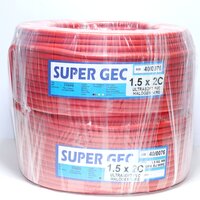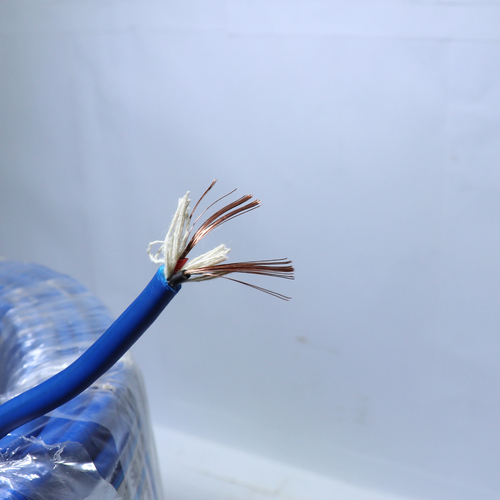1.5 MM x 2 Core Halogen wire 64 MTR
1273 INR/Roll
Product Details:
- Product Type Halogen wire
- Material CCR Copper
- Function Halogen wire
- Usage Home & Domestic Industrial Camera Wire
- Voltage Surge 1100
- Rated Voltage 2500 Watt (W)
- Rated Current 19 Ampere (amp)
- Click to View more
X
1.5 MM x 2 Core Halogen wire 64 MTR Price And Quantity
- 1273 INR/Roll
- 1 Roll
1.5 MM x 2 Core Halogen wire 64 MTR Product Specifications
- 64 MTR
- PVC/ COPPER
- 19 Ampere (amp)
- Halogen wire
- 2500 Watt (W)
- Halogen wire
- Home & Domestic Industrial Camera Wire
- 64 Meter (m)
- Copper
- 1100
- Red, Blue, Black, Pink
- CCR Copper
1.5 MM x 2 Core Halogen wire 64 MTR Trade Information
- 5000 Roll Per Month
- 1-7 Days
- Yes
- Free samples available with shipping and taxes paid by the buyer
- Free
- All India
Product Description
| Halogen-free lightweight copper wire is designed to meet specific requirements in industries where weight and environmental considerations are crucial, such as aerospace, automotive, and electronics. Here's a breakdown of what each term typically refers to: Halogen-Free: This means the wire does not contain halogen elements like fluorine, chlorine, bromine, iodine, or astatine. Halogens are often used in materials like PVC (polyvinyl chloride) for insulation. When halogen-containing materials burn, they can emit toxic gases, so halogen-free wires are preferred in environments where safety and reduced toxicity are important, such as in enclosed spaces or sensitive electronics manufacturing. Lightweight: Lightweight copper wire is engineered to reduce overall weight while still maintaining the necessary electrical conductivity and mechanical properties. This can be achieved through various means, including using thinner conductors, optimizing insulation materials, or employing advanced manufacturing techniques. Copper Wire: Copper is a highly conductive metal commonly used in electrical wiring due to its excellent electrical properties. Copper wire comes in various sizes (gauges) and configurations (solid or stranded) to suit different applications. In lightweight copper wire, the focus is on reducing weight without compromising electrical performance. |
Enter Buying Requirement Details











 Send Inquiry
Send Inquiry Send SMS
Send SMS